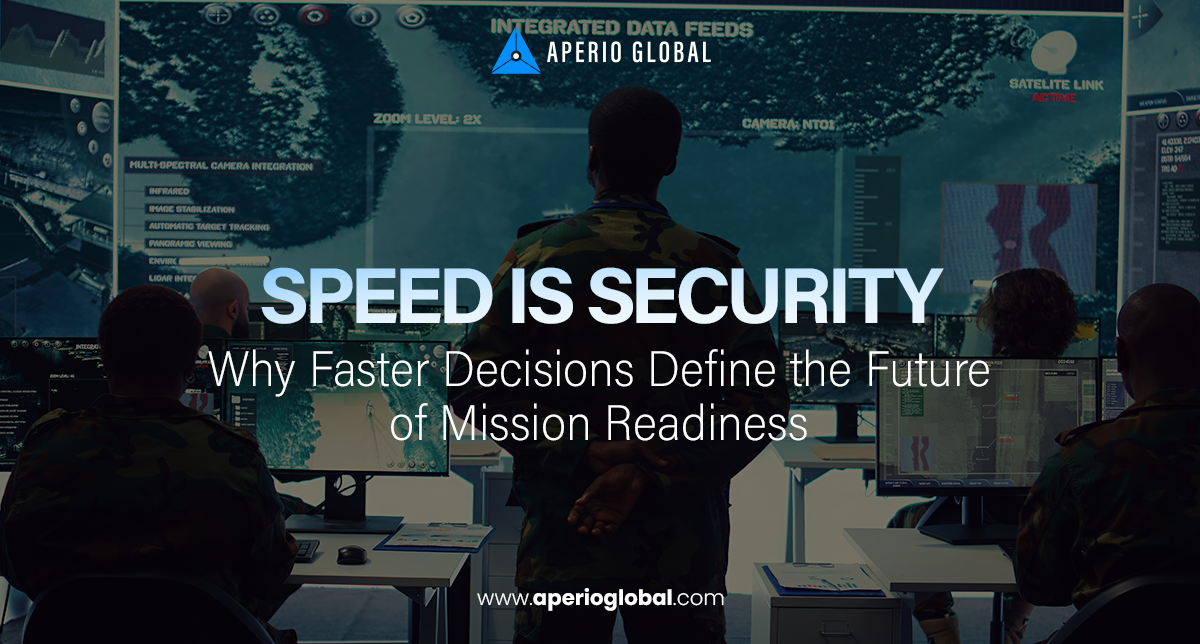
How AI, Data Preparation, and Agile Innovation Give Leaders the Edge in High-Stakes Environments
In national security and defense, time is more than a resource — it is often the difference between success and failure. The faster an agency can detect, decide, and act, the greater its ability to stay ahead of adversaries, adapt to evolving threats, and protect critical missions. Delays, even brief ones, introduce vulnerabilities that can be exploited. In today’s world, speed itself has become a form of security.
The challenge is that information is arriving at an unprecedented pace and scale. Analysts and decision-makers are confronted with streams of sensor data, satellite imagery, intelligence reports, and open-source information, all demanding attention. The paradox is clear: the more data available, the slower decisions can become. Without the right systems, speed collapses under the weight of complexity.
The path forward requires a shift. Agencies must not only collect and protect information — they must transform it into clarity at mission speed. This is where advanced data preparation, explainable AI, and agile innovation converge to give leaders the decisive edge.
Artificial Intelligence plays a critical role in this transformation, but only when it is built on transparency and trust. Black-box models that deliver results without explanation can accelerate processes, but they cannot accelerate confidence. Leaders cannot act on outputs they do not understand. That is why explainable AI is indispensable. It delivers insights in real time, while also showing the reasoning behind them. Analysts are not forced to choose between speed and accountability. They can have both.
Yet AI is only as good as the data it ingests. Raw data is messy, biased, and often incomplete. This is why data preparation is mission-critical. Tools like Aperio Global’s RUSSEL ensure that information is cleaned, organized, and structured before analysis begins. By eliminating noise and bias early in the pipeline, decisions downstream are faster, clearer, and more reliable. What once took hours of manual sorting becomes a seamless process measured in moments.
Agility is the third component of true speed. Innovation in defense and national security cannot wait for long cycles of development and deployment. Missions evolve too quickly. Adversaries adapt too fast. Agile technologies — built to iterate, scale, and respond — ensure that solutions remain aligned with operational needs. For leaders, this means the ability to pivot rapidly without losing momentum, and to deploy capabilities at the speed of mission requirements, not procurement timelines.
The advantage of faster, smarter decisions is not theoretical. It plays out every day in real-world scenarios. A cyber analyst who can detect and contain an intrusion within seconds prevents widespread compromise. A defense leader who can act on fresh intelligence without delay alters the outcome of an operation. A national security team that can connect disparate data points into actionable clarity within minutes stays ahead of an adversary still buried in noise.
This is what “speed is security” means in practice. It is not about rushing. It is about building systems that deliver the right intelligence at the right moment, so that leaders can act decisively and confidently. Speed is not reckless — it is readiness.
At Aperio Global, we see speed as the natural outcome of trusted systems. By combining data preparation, explainable AI, and agile innovation, we help agencies move from reaction to dominance. Every piece of data becomes usable. Every AI output is transparent. Every solution is designed to adapt under pressure.
The future of mission readiness will be defined not just by who has the most data, or even the most advanced tools, but by who can decide first, and decide right. That future belongs to leaders who recognize that in today’s environment, speed is more than an advantage. Speed is security.